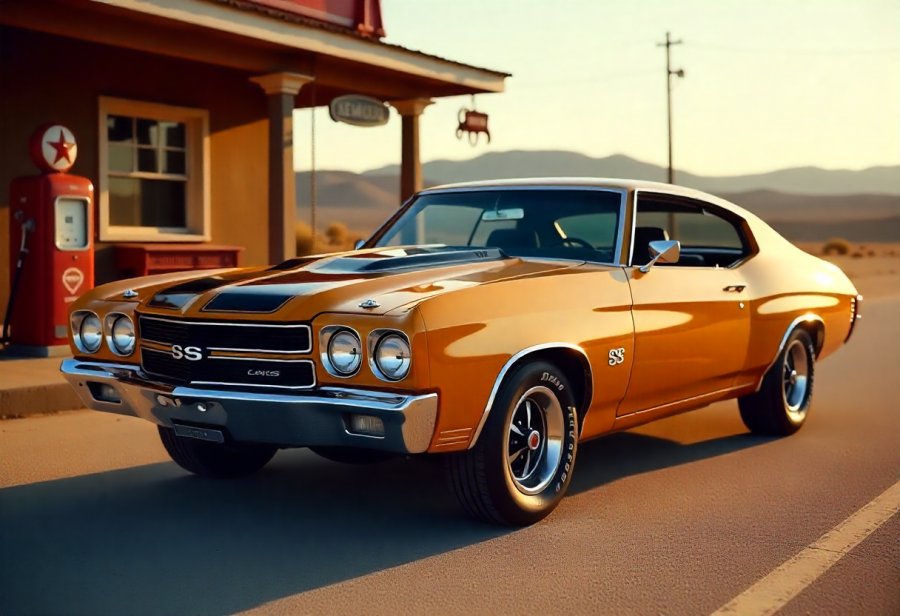Christopher Columbus’s 1492 voyage is often celebrated as a pivotal moment in history, yet beneath the tale lies a story driven by ambition, strategy, and complex motives. His daring expedition, backed by Spain’s monarchs, aimed for a shorter route to Asia but instead unveiled a new continent— the Americas—setting off a wave of exploration, colonization, and cultural upheaval. While his journey connected distant worlds and sparked global exchanges, it also initiated centuries of violence, exploitation, and the devastating impact on indigenous populations. Columbus’s legacy is a paradox: a symbol of daring discovery intertwined with the dark realities of conquest and oppression. How do we reconcile these contrasting truths? His story challenges us to reflect on exploration’s power to both open horizons and inflict profound human costs—an enduring reminder of history’s complex and layered nature.
Columbus’s Voyage: A Turning Point in World History
Christopher Columbus’s voyage in 1492 is often remembered as a turning point in world history, but behind the familiar story lies a complex web of ambition, strategy, and human drive. His journey was not merely about discovering new lands; it was about pushing the boundaries of what was known and reshaping the map of the world. Columbus’s daring expedition set in motion a series of events that would forever alter how nations, cultures, and peoples interacted across continents.
His voyage was fueled by more than curiosity—it was a calculated move by European powers eager to expand influence, access new trade routes, and claim dominance in an emerging global arena. While the idea of reaching Asia by sailing west was not new, Columbus’s bold approach made it tangible. His belief in a shorter route to the riches of the East drove him to challenge the skepticism of many and to undertake a perilous crossing of the Atlantic.
The journey itself was a test of human resolve and technological innovation. Columbus’s ships, the Santa María, the Pinta, and the Niña, were among the best vessels available, built to withstand long oceanic voyages. Weeks at sea with no sight of land stretched the crew’s patience and faith. Tensions ran high, fears grew, and doubts about their course mounted, but Columbus’s unwavering confidence kept the expedition moving forward.
When land finally appeared on October 12, 1492, Columbus believed he had reached the outskirts of Asia. Instead, he had encountered a “New World”—a land unknown to Europeans that would soon become central to global history. His initial landing in the Caribbean marked the beginning of European colonization, a process that would reshape indigenous societies and spark centuries of conquest, culture clash, and exchange.
Yet, Columbus’s journey was as much about ambition as it was discovery. His voyage opened doors to new worlds, but it also laid the groundwork for exploitation and upheaval. His story encapsulates a pivotal moment where exploration was driven by strategic interests—wealth, power, and territorial ambition—often at a great human and cultural cost. His voyage remains a symbol of daring, complexity, and the profound ripple effects of exploration.
Exploration Evolved: The Technological and Geopolitical Foundations
Before Columbus’s voyage in 1492, European exploration was already gaining momentum thanks to key technological and geopolitical advances. Navigational tools like the compass and astrolabe revolutionized sea travel, giving sailors the confidence to cross open waters with greater accuracy. These instruments made long oceanic journeys less risky, encouraging explorers to venture further into uncharted territories. Alongside these tools, improvements in ship design—particularly the development of the caravel—created vessels that could better handle the Atlantic’s unpredictable conditions, further lowering the barriers to global exploration.
At the same time, the ambitions of Spain and Portugal were fueling this push beyond familiar waters. Portugal had already begun exploring Africa’s coast, establishing strategic outposts and seeking a direct route to India and the spice markets of Asia. Meanwhile, Spain, fresh from the Reconquista, aimed to outpace its rivals by claiming new territories and resources in the Americas. Both nations saw exploration as a way to expand influence, control lucrative trade routes, and boost their political power on the global stage.
The high value Europeans placed on Asian goods—such as spices, silk, and gold—drove the desire for new routes. Overland paths like the Silk Road were becoming congested and perilous, prompting the search for alternative maritime routes. Sailing west around Africa or directly across the Atlantic offered a promising shortcut. Portugal’s advances along Africa’s coast, combined with Spain’s focus on Atlantic exploration, created a fierce competition that set the stage for Columbus’s daring westward voyage.
These technological and geopolitical efforts weren’t just about adventure—they were rooted in economic motives and strategic ambitions. Nations aimed to control new trade routes, amass wealth, and extend their influence across the world. The innovations in navigation and shipbuilding made these goals achievable, fostering a sense of possibility. The groundwork laid during this period paved the way for the Age of Exploration, transforming what was once considered the edge of the known world into a frontier for conquest and discovery.
By the time Columbus set sail in 1492, explorers had already begun to push the boundaries of the known world. These advancements and ambitions created a fertile environment for discovery. Columbus’s voyage was not just a leap into the unknown—it was a culmination of technological progress and geopolitical drive that would forever change global history. His journey helped open the gates for a new era of exploration, colonization, and cultural exchange that continues to shape the world today.
The 1492 Voyage: Planning, Journey, and Immediate Impact
Columbus’s first voyage in 1492 was a carefully planned expedition fueled by years of persistence and strategic backing. After countless rejections, he finally gained the support of Spain’s Queen Isabella and King Ferdinand, who saw an opportunity to boost their wealth and influence through exploration. With their approval, he assembled three ships—the Santa María, the Pinta, and the Niña—and gathered a crew eager for adventure. Despite the excitement, the journey was shrouded in uncertainty, as sailors faced the daunting prospect of crossing uncharted ocean waters.
Setting sail from Palos de la Frontera in August, the fleet headed into the vast, open Atlantic. Weeks passed with no sight of land, and tension grew among the crew. Fears emerged about the unknown—some doubted Columbus’s navigation skills, others worried they might be sailing off the edge of the world. Columbus, however, remained confident, insisting land was near. His unwavering belief kept the crew moving forward through storms, doubts, and the endless horizon.
Finally, on October 12, 1492, land appeared—a small island in the Caribbean Columbus named San Salvador. He believed he had reached the outskirts of Asia, but in truth, he had stumbled upon a new continent—the Americas. His discovery marked the beginning of European contact with the New World, opening a chapter of exploration and conquest. Columbus’s initial landing set off a chain reaction that would reshape global history, with Europeans eager to explore, claim, and exploit these new lands.
His subsequent voyages expanded European knowledge of the Caribbean and Central America, fueling hopes of wealth and territorial control. Yet, the voyage’s immediate aftermath was complex. Columbus and his men sought gold and resources, often resorting to violence against indigenous peoples. Their arrival brought unintended consequences—disease, displacement, and cultural upheaval that devastated native societies. The voyage’s success was undeniable, but it also marked the start of centuries of colonization with profound human costs.
The journey also illuminated the dangers of exploration—uncertainty, peril, and the challenge of navigating the unknown. Columbus’s unwavering resolve and innovative ships helped overcome these obstacles, but the voyage’s true significance lay in its role as a catalyst for global change. It challenged existing maps and assumptions, opening the doors to a new era of discovery.
While Columbus believed he had reached Asia, his voyage revealed a vastly different world—one that would forever alter the course of history. His bold crossing ignited ambitions across Europe, setting in motion a wave of exploration, colonization, and cultural exchange. The immediate success of his voyage masked the long-term complexities that would unfold—conflict, exploitation, and the reshaping of entire civilizations.
Ultimately, Columbus’s first voyage was more than a mere expedition; it was a turning point. It demonstrated how exploration driven by ambition can unlock new worlds but also bring unforeseen consequences. The journey into the unknown reshaped world history, with impacts that continue to resonate today, highlighting both the daring spirit and the profound costs of human discovery.
This historical event continues to inspire discussions about exploration and its impact. For those interested in understanding more about the historical significance of Columbus’s voyage, exploring detailed accounts of his journey can provide deeper insights. You can learn more about the voyage and its enduring influence by visiting Columbus's Voyages and Their Legacy.
Controversies and the Complex Legacy of Columbus
Columbus’s voyages opened new horizons for exploration and connection, but they also set in motion a trail of violence, exploitation, and cultural destruction that tarnishes his legacy. Upon arriving in the Americas, Columbus and his men quickly shifted focus to extracting wealth through brutal means. They enslaved indigenous peoples, forcing them into harsh labor systems like the encomienda, which devastated communities and led to widespread suffering. Diseases such as smallpox and measles spread rapidly, wiping out millions of native inhabitants before Europeans even set foot on land, decimating entire civilizations.
The impact extended beyond immediate violence. Columbus’s actions initiated a process of cultural erasure—indigenous traditions, languages, and social structures were systematically undermined as European settlers imposed new political and religious systems. Entire societies were displaced or destroyed, leaving scars that persist today. This colonization, driven by greed and a desire for dominance, often came at the expense of native peoples’ lives and their rich cultures.
In recent years, the darker side of Columbus’s legacy has come into sharper focus. Critics highlight his role in unleashing centuries of systemic violence, displacement, and cultural suppression. Movements calling for the removal of statues and the renaming of holidays reflect a desire to confront this history honestly. Many now see Columbus not as a hero of discovery, but as a symbol of conquest and oppression—an emblem of a colonial system rooted in exploitation that caused immense suffering.
This ongoing debate underscores how exploration driven by ambition often carries profound human costs. While Columbus’s voyages expanded European influence and connected distant worlds, they also marked the beginning of centuries of violence and marginalization for indigenous populations. Recognizing these realities doesn’t diminish the importance of understanding history; it calls for a more nuanced perspective that respects the suffering of Native communities and acknowledges the full scope of colonization’s impact.
By confronting these complex truths, we deepen our appreciation of history’s layered nature. Columbus’s journeys reshaped the world, but they also set in motion a legacy of pain and upheaval. Acknowledging both the achievements and the atrocities involved helps us learn from the past—urging us to approach future exploration with greater responsibility, awareness, and respect for all peoples involved.
Reflecting on Ambition, Discovery, and Their Enduring Consequences
Columbus’s voyages exemplify how ambition and strategic interests can drive exploration, shaping history in profound ways. His expedition was not merely about curiosity; it was a calculated effort to serve the ambitions of European powers, especially Spain. By seeking a new route to Asia, Columbus aimed to give Spain a competitive edge in trade and empire-building. His journey opened new worlds, but it also laid the groundwork for exploitation, conquest, and cultural upheaval that would have lasting consequences.
The long-term effects of Columbus’s voyages transformed the world’s economic and political landscape. They sparked a wave of exploration that led to European colonization across the Americas, spreading language, culture, and institutions that still influence the continent today. The Columbian Exchange introduced crops, animals, and technologies that reshaped societies worldwide. Yet, beneath these exchanges lay a trail of violence, displacement, and devastating diseases that decimated indigenous populations and erased entire civilizations.
His voyages remind us that exploration often involves a complex mix of discovery and consequence. While they expanded horizons and connected distant lands, they also initiated centuries of colonization marked by brutality and cultural destruction. Recognizing this dual legacy is essential to understanding the true impact of Columbus’s journey. It challenges us to see him not only as a pioneer but also as a figure whose actions ushered in profound human suffering.
This complex history urges a nuanced perspective, blending admiration for the daring spirit of exploration with acknowledgment of its darker side. Columbus’s legacy is a story of achievement intertwined with tragedy—a reminder that human curiosity and ambition can come at a great human cost. Confronting these truths fosters a deeper appreciation of history’s layered nature and the importance of responsibility in future endeavors.
Reflecting on Columbus’s story highlights the ongoing debate about how we remember and interpret the past. His voyages brought interconnectedness and opportunity, but also pain and loss. Recognizing both aspects enables us to learn from history, ensuring that progress is measured not only by discovery but also by respect and compassion for those affected. It challenges us to approach future exploration with greater awareness and a commitment to justice.
In the end, Columbus’s journey reshaped the world, setting in motion forces that continue to influence global dynamics. His ambition changed maps and opened horizons, but it also initiated a legacy of exploitation that still echoes today. Appreciating this balance helps us better understand the complexities of exploration—its power to create and destroy—and reminds us to pursue progress with humility and care for the human stories intertwined with every discovery.













